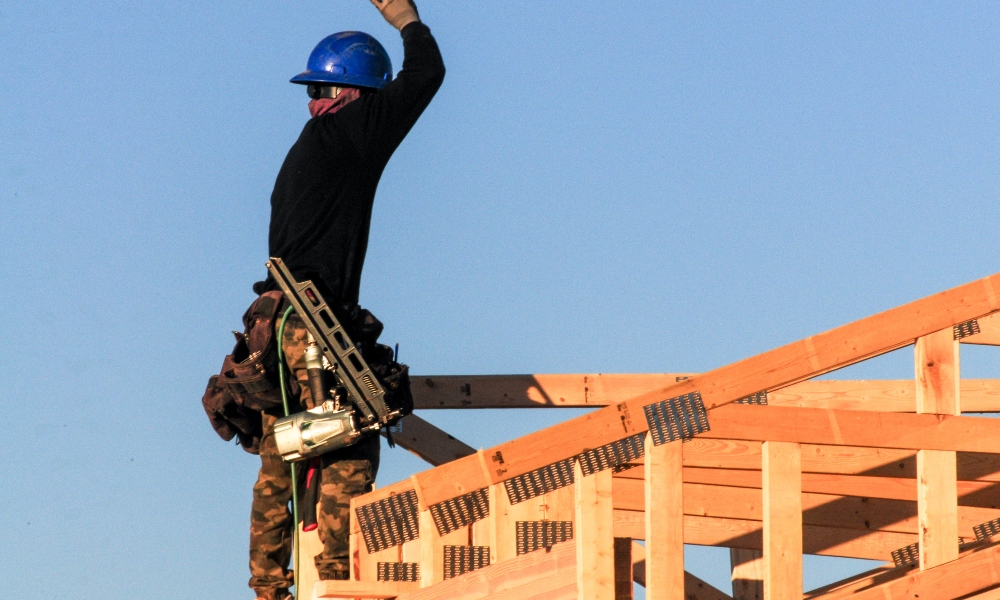Following January’s dismal showing, new construction data for February showed a solid rebound in housing starts. However, homebuilders across the country continue to grapple with rising costs due to tariffs, among other issues, leading to a rather dismal housing forecast for 2025.
New Residential Construction Report Shows February Starts Bounced
According to the New Residential Construction Report, overall housing starts jumped 11.2% in February to a seasonally adjusted annual rate of 1.50 million units, which measures the number of housing units builders would start if this pace was kept for 12 months.
Despite the quick rebound, February’s number still remain down 2.9% from the year prior.
Within that segment, single-family housing starts kicked up to 1.11 million units, up 11.4% from January, marking the highest pace since last year. Multifamily likewise saw a surge in apartments and condos being built, jumping 10.7% to an annualized rate of 393,000 units.
Housing Data by Region Sees Biggest Surge in Northeastern States
Looking at regional housing starts data, the Northeast saw perhaps the biggest surge of new construction in February, with total housing starts skyrocketing 47.4%. Southern and Western states saw increases of 18.3% and 5.9%, respectively, while the Midwest served as the only region that saw a noteworthy drop. Total housing starts were down by 24.9% in Midwestern states, as per the most recent housing starts data.
Tariff Uncertainty Continues to Shake Homebuilders
Despite this rebound, uncertainty over tariffs, as well as a shortage of lots and labor continues to drag down on homebuilder sentiment, with experts such as NAHB Senior Director Jing Fu forecasting a flat 2025 as far as single-family housing starts are concerned.
New multifamily construction isn’t expected to fare much better either heading out of February, as Fu is forecasting the segment to remain relatively soft in the beginning of 2025 before finally stabilizing.
Earlier this month, President Trump imposed a 25% tariff on most goods from Canada and Mexico, before suspending those tariffs. Tariffs on Chinese goods, however, still remain in effect, as well as the levies on steel and aluminum, all of which went into effect this month.
NAHB estimated that the current tariffs will increase homebuilding costs by roughly $9,200 per home.
Economic Worries Pound Consumer Markets as Well
Outside of the homebuilding industry, these same economic issues continue to weigh on consumer sentiment as well. Heading into March, consumer sentiment plunged to a nearly two-and-a-half-year low heading into March with inflation expectations soaring because of “frequent gyrations in economic policies.”
Consumer spending, did however grow in February—up 0.2% for retail sales—with analysts stating that historically consumer sentiment reports have softer correlations with consumer spending, generally meaning they don’t influence one another much.
However, the continual and worsening decline of consumer sentiment—alongside that of worsening business sentiment—has caught the attention of analysts as a potential forerunner to a slowing economy. Growth estimates are currently below a 1.5% annualized rate.
Fed Decisions in Spotlight
While financial markets expect the Federal Reserve to resume lowering interest rates in June, inflation concerns at all corners of the economy reinforce the possibility of elevated rates continuing for quite some time, compounding on the current housing affordability crisis.
These concerns were reinforced in the most recent report on import costs which increased 0.4% in February, matching January’s gain at a time when economists were expecting a 0.1% decline.
Because these prices exclude tariffs in their calculations, any rise in prices at this time is interpreted as tariff costs being offloaded onto consumers rather than being absorbed by companies, thereby contributing to inflation.
New Permits Bely a Subdued Housing Forecast
Compounding this dour atmosphere, permits, which are generally viewed as a potential forecast for new construction, dropped across the board in February. Overall, the annual adjusted rate of permits being taken out dropped 1.2% from January to 1.45 million. Single-family permits dropped 0.2% to 992,000, while multifamily permits fell 4.3% to a rate of 404,00 units.
The Northeast saw the sharpest drop in permits being taken out, dropping 15.3% from January, while the West fell 7.6%. The Midwest and South both saw an uptick in permits being taken out, however, up 8.9% and 1% respectively.

















